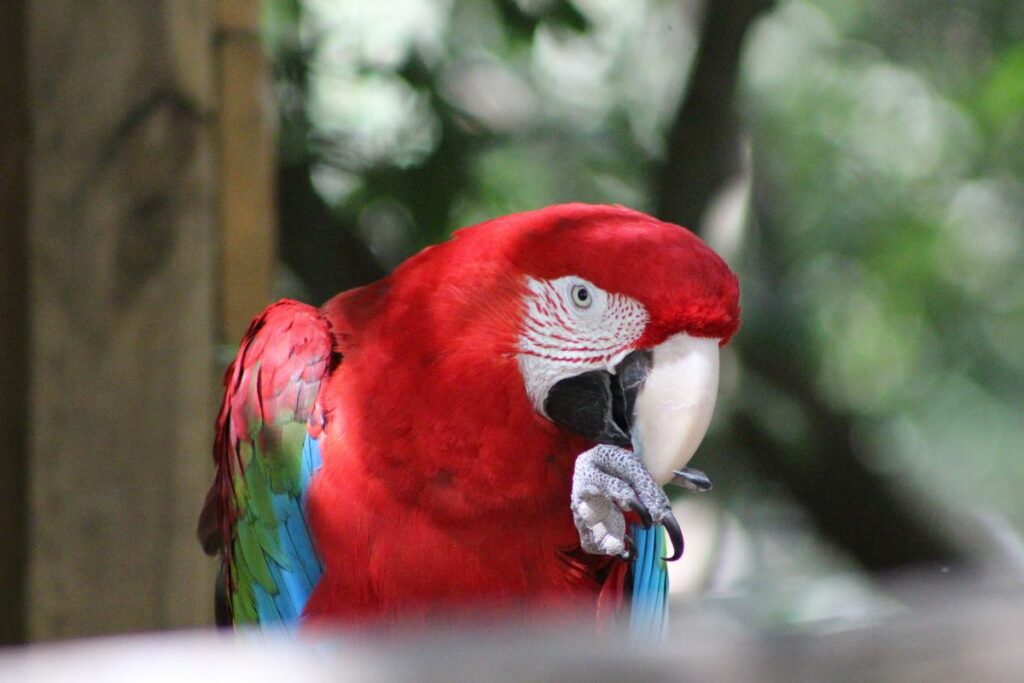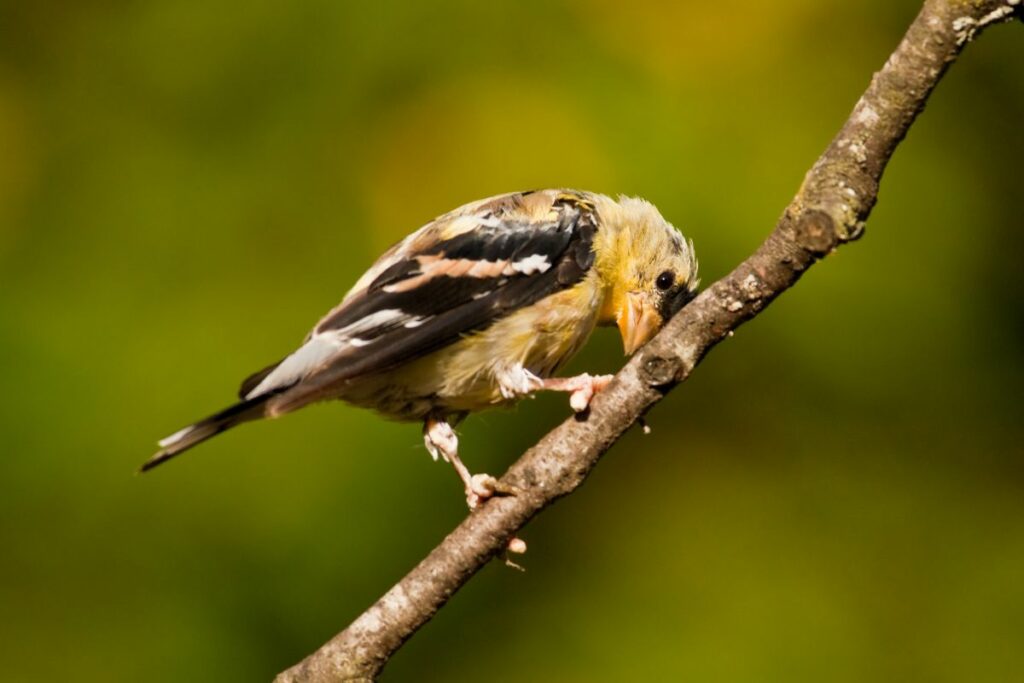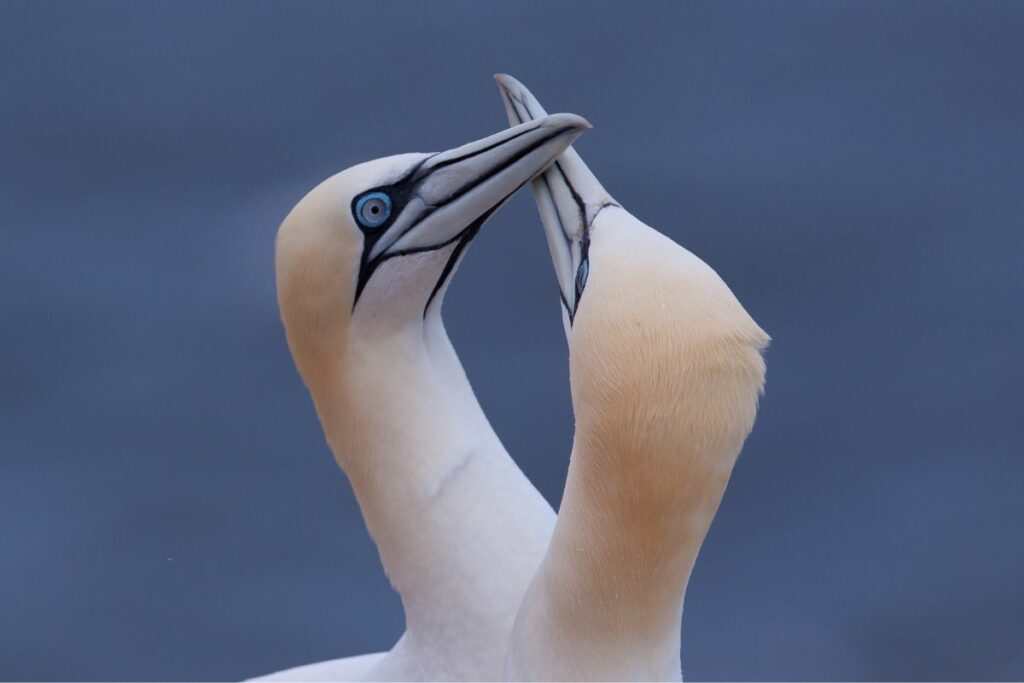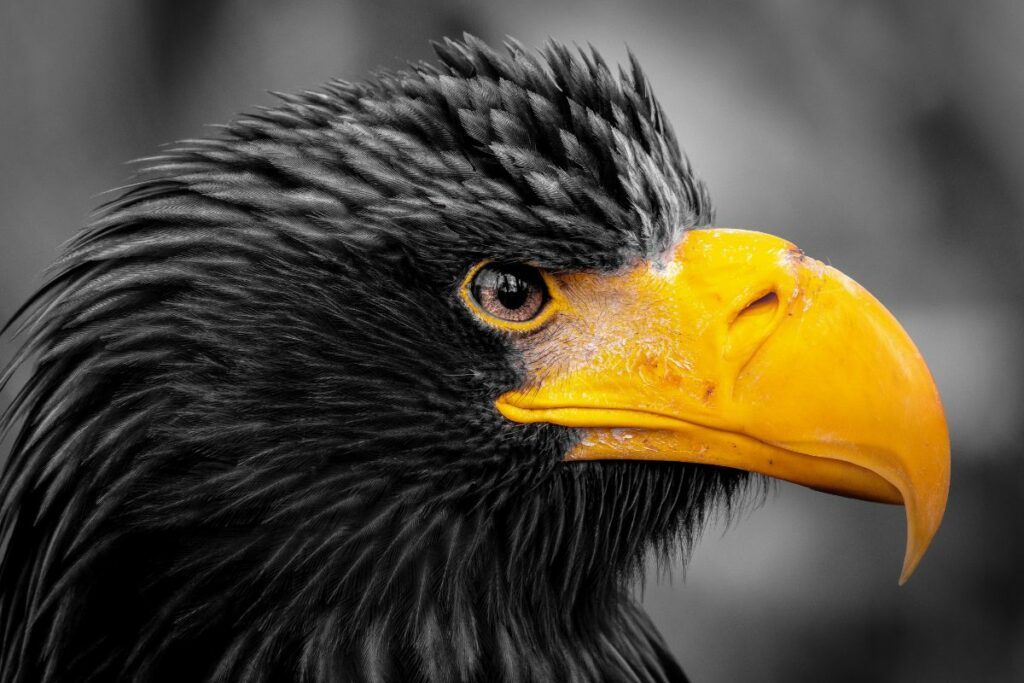As an Amazon Associate, we earn from qualifying purchases with no additional costs for you.
Some features are unique to birds. Only birds have feathers, hollow bones, and beaks. If you have spent time watching birds, you will notice some interesting behaviors, one of which is rubbing the beak.
The reason birds rub their beaks is to remove food particles that may be stuck to the beak. A bird may also rub the beak on a surface to try to keep it trimmed and in the correct shape and as a way to show affection.
Read on below to find out more about why birds rub their beaks, including what beak grinding is, what the beak is made of, and the variation you can find in bird beaks.
TIP: If you want to check out the best pair of binoculars for bird watching, we recommend a pair of waterproof and fog-proof 8 x 42 binoculars like the Celestron – Outland X 8×42 Binoculars (Amazon link).
Why Do Birds Rub Their Beaks?
Most ornithologists agree that birds will often rub their beaks to keep them clean. This is also commonly called the napkin principle. The idea is that the birds will make sure to remove any food particles that are stuck on the beak.
Good hygiene is important in keeping the bird healthy. Food particles and sticky juice left on the beak after eating are unhygienic because they provide a surface for bacteria to grow. Similar to how we wipe food off our mouths, birds rub food off their beaks.
Diet And Frequency Of Beak Rubbing
Fruit and meat-eating birds are more likely to need to clean their beaks because the food is sticky or has liquid parts. Seed-eaters are less likely to have to clean their beaks because the seeds are dry.
There has been research done on starlings where the birds did rub their beaks more after eating sticky food compared with drier food.
However, all species of birds will likely ensure they keep their bodies clean by preening and removing items stuck to their beak.
TIP: Are you looking for high-quality food for wild birds on your backyard? I recommend using Wagner’s products with the highest quality grains used in blending and made in the USA (Amazon links):
– Deluxe Treat Blend Wild Bird Food
– Eastern Regional Wild Bird Food
– Western Regional Wild Bird Food
– Midwest Regional Wild Bird Food
– Southern Regional Wild Bird Food
Trimming The Beak
A bird may help keep their beak in shape by rubbing it against hard surfaces. This can help prevent the beak from overgrowing. This behavior, combined with eating the correct food, can help ensure that the beak and claws are not too long or growing abnormally.
Birds out in the wild can find enough hard surfaces and eat a variety of foods to keep their bodies healthy. It is, thus, rare to see a bird in the wild that has an overgrown beak or claws.
Pet birds need to be provided with hard surfaces to rub their beaks on and given the correct food to avoid dietary insufficiencies that could cause beak overgrowth.
It is important to research and find out the correct diet for your pet birds so that they don’t have the problem of beaks becoming overgrown.
A Show Of Affection
Some people believe that beak rubbing (known by some as feaking) can be a sign of affection. A bird may also grab at your clothes or rub its beak against you to get your attention.
Pet birds are often imprinted on their owners, which means that they are bonded to people instead of other birds. This imprinting is why the birds are attached to their owners and want attention from them.
The Benefit Of Beak Rubbing For Pollination
Birds that feed on plants may find their head, face, and beak covered in pollen from nearby flowers. You can often find this dusting of pollen on the faces of nectar feeders like sunbirds and hummingbirds.
It is even more likely to happen in birds that don’t have long beaks and that put their heads into flowers to get to the nectar. You can often see this on the faces of orioles and weavers.
The birds help pollinate indirectly when they rub their beaks and faces on another flower of the plant. This can happen as they visit one flower after the next. This is similar to how bees and many other insects go about pollinating flowers.
What Is Beak Grinding?
If you have ever owned a parrot species, like a cockatiel, you will often hear a grinding noise. This beak grinding often signals contentment and happens when the bird is getting ready to sleep. The grinding noise comes from the bird rubbing the upper and lower parts of the beak together.
What Is The Structure Of The Beak?
It is helpful to understand what the bird’s beak is made of and why trimming the beak is done the way it is.
The beak of birds is comprised of bone tissue. The beak is a modified upper and lower jaw bone. It is only the outermost layer of the bird’s beak that is made of keratin. This is the layer that keeps growing, albeit slowly.
Damage to this outer layer is not harmful to the bird. This is the part of the beak that is naturally worn down by the bird rubbing its beak on various surfaces. The birds do have noses (called nares), which are found near the back of the beak towards the face.
However, damage to the bone of the beak is detrimental and will affect the bird’s ability to eat and survive. In the past, damage to the bony structure of a bird’s beak was difficult or impossible for a vet to correct.
Today, however, with the advent of 3D-printing technology, parts of the beak can be printed and used as a prosthesis to replace the missing part of the beak.
Variation In The Beak
There is variation among birds in terms of the size and shape of the beak. Birds are adapted to feed on different food items. The beak often reflects the diet of the bird. Birds can be grouped by diet into a number of categories, including the following:
- Insect-eaters: These birds feed mainly on insects, and their beak is usually narrow and pointed. Shrikes, thrushes, and warblers are mainly insect-eaters that have these types of beaks.
- Seed-eaters: The birds that feed on seeds have short, conical beaks. The beaks are designed to remove the hull of the seeds. A variety of finches, sparrows, and weavers have conical beaks that they use to crack seeds.
- Nectar-eaters: The beaks of these birds are long and very slender so as to reach down deep into flowers where the nectar is found. Hummingbirds and sunbirds are examples of birds with these beaks.
- Fish-eaters: Birds that eat fish have strong, long and sharp beaks to spear fish in the water. You can see this type of beak on kingfishers, darters, and cormorants. Some oceanic birds are very specialized, with beaks designed to scoop up fish from the water. The Black Skimmer is an example of this feeding strategy and adapted beak.
- Meat-eaters: Birds, like eagles and hawks, have strong, hooked beaks that are adapted to ripping and tearing the flesh of animals.
Conclusion
Birds rub their beaks on surfaces in order to remove extraneous pieces of food. They also rub the beak to help keep it the correct length and shape and may rub the beak as a sign of affection.
Beak grinding is a form of beak rubbing that parrots do when they feel content. Beaks are made of bone covered by a layer of keratin; beaks occur in all shapes and sizes, which match the bird’s diets.
TIP: Check out my recommended products if you are looking for the best and trusted equipment for birdwatching in the wild or on your backyard (Amazon link):




